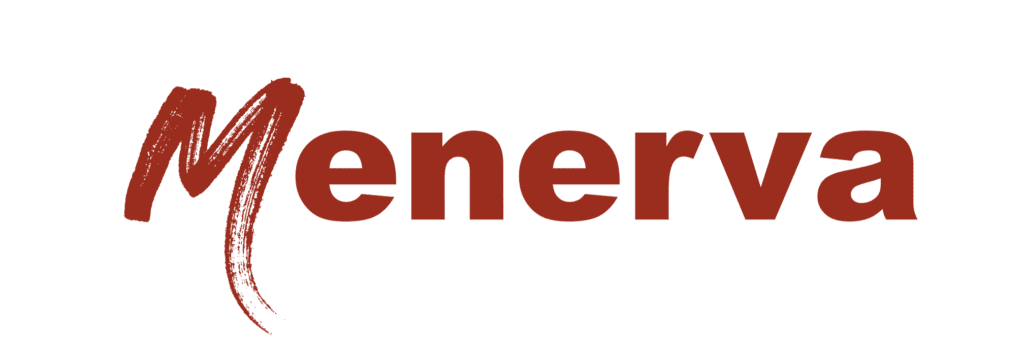In the SEO world, maintaining your website’s health and visibility is akin to nurturing a garden; both require ongoing attention and care to thrive. Your website’s SEO (search engine optimization) is crucial for staying competitive, adapting to algorithm changes, enhancing user experience, and keeping content fresh. This guide highlights the importance of regular SEO maintenance, including the vital role of metrics in assessing your site’s performance.
What is SEO maintenance?
SEO maintenance continuously optimizes a website to maintain and raise its rankings in search engine results pages (SERPs). It’s a critical component of digital marketing that ensures a website remains competitive and relevant and attracts targeted traffic over time. Unlike a one-time setup or overhaul, SEO maintenance involves regular reviews and adjustments to a website’s content, structure, and technical setup to adapt to evolving search engine algorithms, market trends, and user behaviors.
This ongoing effort can include updating content to keep it fresh and relevant, ensuring the site’s technical health is optimal for both users and search engine crawlers, and analyzing performance data to identify areas for improvement. Effective SEO maintenance helps preempt potential drops in rankings due to algorithm updates, maintains a website’s visibility and accessibility, and enhances the user experience to encourage engagement and conversions. For businesses, this means not just attracting more visitors but the right kind of visitors — those most likely to convert into customers.
Effective digital marketing is fluid as it lives in a dynamic space where search engines continually update their algorithms and user expectations evolve. SEO maintenance is critical to sustain that agility. It ensures that a website doesn’t just reach the top of the SERPs but stays there, driving consistent traffic and contributing to the business’s overall online success.
The Importance of SEO Maintenance
SEO maintenance isn’t just a beneficial practice; it’s a vital ongoing strategy for businesses looking to secure and enhance their online presence. This section delves into why SEO maintenance is indispensable, focusing on several key factors that necessitate regular implementation.
- Ranking Results Change. Search engine rankings are not static. A website at the top of SERP today may not stay there tomorrow. Rankings fluctuate due to various factors, including changes in search engine algorithms, competitors’ SEO strategies, and shifts in user search behaviors. Regular SEO maintenance helps businesses adapt to these changes, ensuring their website remains visible and competitive in search results.
- Algorithms Change. Search engine algorithms (like Google’s) are typically updated frequently to improve the relevance and quality of search results for users. These updates can significantly impact website rankings. If you optimized your website for a previous algorithm, your rankings may drop if you do not adapt to new changes. SEO maintenance includes staying informed about these updates and adjusting SEO strategies accordingly to maintain or improve rankings. For example, after a Google algorithm update emphasizing authoritative content, a large healthcare provider saw its rankings drop. By engaging medical experts to enhance content credibility, the company restored its rankings and boosted its overall search credibility.
- Competitors. Your competitors are not standing still. They’re also employing SEO strategies to improve their rankings and visibility. As they update their content, improve their site’s user experience, and optimize their keywords, your website may fall behind if you’re not also actively engaging in SEO maintenance. Regularly analyzing competitors’ strategies and adjusting your own can help you stay ahead or at least keep pace in the highly competitive digital marketplace. For example, a fashion retailer noticed their online visibility declining as competitors updated their websites. They responded by conducting regular SEO audits and updating their strategies with trendier content and a refreshed website design. This proactive approach allowed them to regain their competitive edge, attract more traffic, and boost sales.
- Market Changes. Consumer behaviors and market trends can shift rapidly, influencing how people search for information, products, and services online. Keywords that were popular and effective a few months ago may become less relevant as new trends emerge. SEO maintenance involves continuously researching keywords and understanding these changes to ensure that your website’s content and keywords are updated and aligned with current market demands, helping to attract the right audience. For example, a tech company noticed a shift in consumer interest from desktop computers to portable laptops and tablets. They quickly responded by adapting their SEO strategy and updating the keywords and content on their website to focus more on mobility and convenience. This timely adjustment in response to market trends allowed them to capture the growing audience for portable devices, significantly boosting their web traffic and sales.
- Website Updates and Technical Health. Websites are dynamic, with regular updates to content, design, and structure. Each update, whether adding new content, removing outdated information, or changing navigation, can affect SEO. Additionally, your website’s technical health—page load times, mobile responsiveness, and secure connections (HTTPS)—is critical in search rankings. Regular SEO maintenance ensures that your website is not only up-to-date with the latest content but also technically optimized for search engines and users.
- User Experience and Engagement. Search engines increasingly prioritize user experience (UX) in their ranking algorithms. Factors like site speed, mobile-friendliness, and intuitive navigation directly affect a user’s experience and, consequently, your SEO rankings. Regular maintenance checks and improvements to the UX can lead to better engagement, lower bounce rates, and higher rankings.
How to Maintain SEO: Strategies for Ongoing Success
To ensure search engines see your website and consider it competitive, you should integrate content enhancement and technical SEO maintenance into your routine. Here’s a deeper look into these strategies, particularly emphasizing using Google Search Console for technical upkeep.
Content Maintenance
Updating Existing Content involves regularly revisiting your site’s pages to refresh them with the latest information, relevant statistics, and timely content. This is crucial because current content is more likely to engage users, leading to increased time spent on your site and search engine rankings. You should schedule content reviews at least quarterly, focusing on updating any outdated statistics, revising or removing irrelevant sections, and ensuring the content meets your audience’s current needs and interests.
Keyword Optimization integrates current, relevant keywords into your content to reflect changing search trends. As the way people search evolves, so should your keyword strategy to maintain visibility in search results. Use tools like Google Keyword Planner to find trending keywords in your industry and incorporate them naturally into your content, ensuring they align with user intent.
Improving User Engagement means making your content more engaging and easier to interact with. Enhanced engagement signals to search engines that your content is valuable, which can positively affect your site’s rankings. Techniques to boost engagement include:
- Incorporating multimedia like images or videos to complement text.
- Breaking text into manageable sections with headings for better readability.
- Using bullet points to summarize key points.
- Pose questions or calls to action at the end of posts to encourage comments and shares.
Technical SEO Maintenance (Google Search Console)
Monitoring Site Health with Google Search Console allows you to identify and fix crawl errors, broken links, and indexing issues that could hinder your site’s performance in search results. Here’s how to address these technical aspects:
- Crawl Errors: For crawl errors, check the “Coverage” report to identify pages Google can’t crawl and resolve these issues based on their specific error codes, such as correcting 404 errors by restoring deleted pages or setting up 301 redirects.
- Broken Links: Broken links negatively impact the user experience and SEO. Use the “Links” report to find and repair or replace these links.
- Indexing Issues: These can prevent pages from appearing in search results. The “Coverage” report can help identify why pages aren’t being indexed, allowing you to rectify any unintentional “noindex” tags or “robots.txt” disallow directives.
- Mobile Usability: This is critical now that search engines (like Google) prioritize mobile-first indexing. A site that doesn’t translate well to mobile devices can significantly impact rankings. The Mobile Usability report in Google Search Console highlights issues such as text that’s too small to read and elements too close together, guiding you through fixing these problems to ensure a seamless mobile experience.
SEO Metrics
Understanding and assessing specific metrics is essential to take the temperature of your SEO strategies and identify areas for improvement. This section outlines how to measure and interpret critical SEO metrics such as rankings, traffic, and engagement.
Tracking Rankings involves monitoring where your pages appear in search engine results for specific keywords. It’s a direct indicator of SEO performance and visibility. To track rankings, use tools like Google Search Console or SEMrush to monitor your keyword rankings over time. Pay attention to fluctuations—a drop in rankings might indicate a need for content updates or technical SEO improvements.
Analyzing Traffic provides insights into how many visitors are coming to your site from search engines, which is critical for understanding your site’s appeal and reach. To effectively analyze traffic, utilize Google Analytics to review the traffic volume, especially the “Organic Search” segment, to see trends in how search users find your website. Look at both the number of sessions and unique users to understand your site’s reach and repeated interest.
Understanding Engagement Metrics such as bounce rate, time on site, and pages per session helps you evaluate user satisfaction and content relevance. High engagement levels typically indicate content that meets users’ needs and encourages them to explore your site further. To measure engagement, in Google Analytics, review bounce rate (the percentage of visitors who leave after viewing only one page), average session duration, and pages per session. A lower bounce rate and higher values for the other two metrics suggest effective content that engages and retains visitors.
Conversions measure how effectively your site turns visitors into customers or leads. Tracking conversions is crucial for assessing the ROI of your SEO efforts. Set conversion goals in Google Analytics to track specific actions like form submissions, product purchases, or sign-up completions. Analyze conversion paths to understand how users navigate through your site before completing a goal.
Backlink Profile Analysis involves evaluating the quantity and quality of external sites linking back to your content. Backlinks are a strong indicator of your content’s authority and trustworthiness. Use tools like Ahrefs or Moz to assess how many backlinks and referring domains point to your site. Evaluate the authority of linking sites—high-quality, relevant backlinks can significantly boost your SEO.
Regularly analyzing these metrics provides a comprehensive view of your SEO performance so that you can make informed decisions to optimize your strategies. Remember, you’re playing the long game with SEO. Your best moves are sustained monitoring and adjustments to achieve and maintain high rankings, traffic, and engagement levels.
Staying Informed
An essential component of effective SEO maintenance is staying on top of the latest best practices, algorithm updates, and trends in the SEO world. Yesterday’s strategies might not yield the same results today. Being informed helps refine existing strategies and ensures your website adheres to current search engine guidelines, protecting it from penalties and drops in rankings.
Incorporate Learning into Your SEO Routine
- Make it a habit to catch up on the latest SEO news and insights. Read blogs, listen to podcasts, or participate in webinars and online courses from trusted industry experts and platforms such as Moz, Search Engine Journal, and Google’s Webmaster Central Blog.
- Join SEO communities on Reddit, LinkedIn, or specialized SEO forums. Community engagement can provide insights into real-world problems and solutions, trending topics, and expert advice.
Apply New Knowledge to Your SEO Practice
- Evaluate the relevance and potential impact of new trends or updates on your existing SEO strategy. Not every trend will apply to your website or industry, but staying aware helps you make informed decisions.
- Regularly review and update your SEO plan and practices based on credible insights and updates. For instance, if Google announces a new ranking factor, assess your website’s current standing regarding this factor and adjust your strategy accordingly.
Monitor Algorithm Updates
- Pay close attention to official announcements from search engines about algorithm updates. Understanding these updates is crucial for anticipating and reacting to potential changes in search rankings.
- Use analytics and monitoring tools to observe the impact of algorithm updates on your site’s performance. Sudden changes in traffic or rankings can indicate that an update has affected your site, prompting a review and adjustment of your SEO strategies.
Implement Continuous Learning and Improvement
- SEO maintenance isn’t just about fixing issues—it’s about proactive improvement and adaptation. Incorporate gained insights into your ongoing SEO efforts, continually refining and enhancing your strategies to align with best practices and the latest guidelines.
- Document changes and track their impact over time to understand which adjustments lead to positive outcomes. This ongoing cycle of learning, implementing, and reviewing is key to maintaining and improving your website’s SEO performance.
- Committing to staying informed and integrating continuous learning into your SEO maintenance routine ensures that your strategies remain effective and your website stays competitive in the ever-evolving search landscape. This proactive approach to SEO not only helps adapt to changes but also capitalizes on new opportunities to improve visibility, engagement, and conversions.
How Menerva Digital Can Help
As we navigate the complexities of SEO maintenance, staying ahead in digital marketing requires diligence and a keen understanding of evolving best practices, trends, and search engine algorithms. At Menerva Digital, we specialize in crafting both bespoke and agile SEO strategies that address current needs and are adaptable to future changes. Our team of experts continuously monitors the SEO landscape, ensuring that your digital presence is not just maintained but optimized for maximum visibility, engagement, and conversion. By partnering with us, you leverage our commitment to staying informed and our expertise in implementing effective, data-driven SEO maintenance strategies. Let Menerva Digital help your website achieve and maintain its peak performance in search engine rankings





